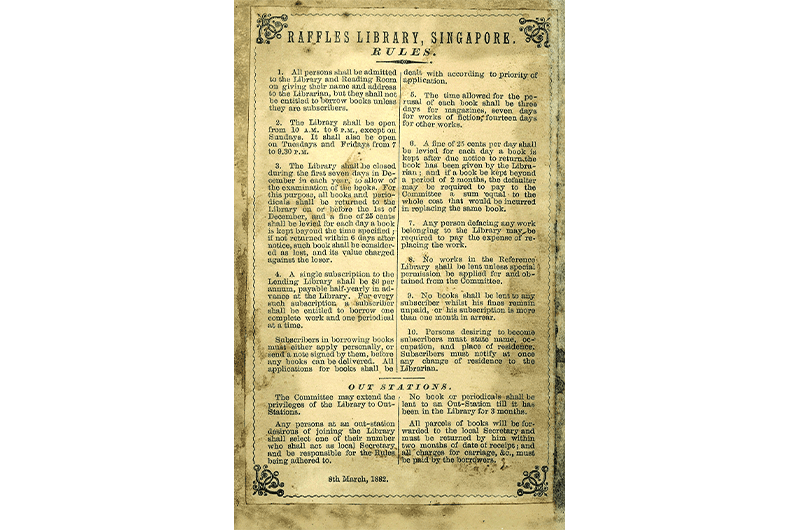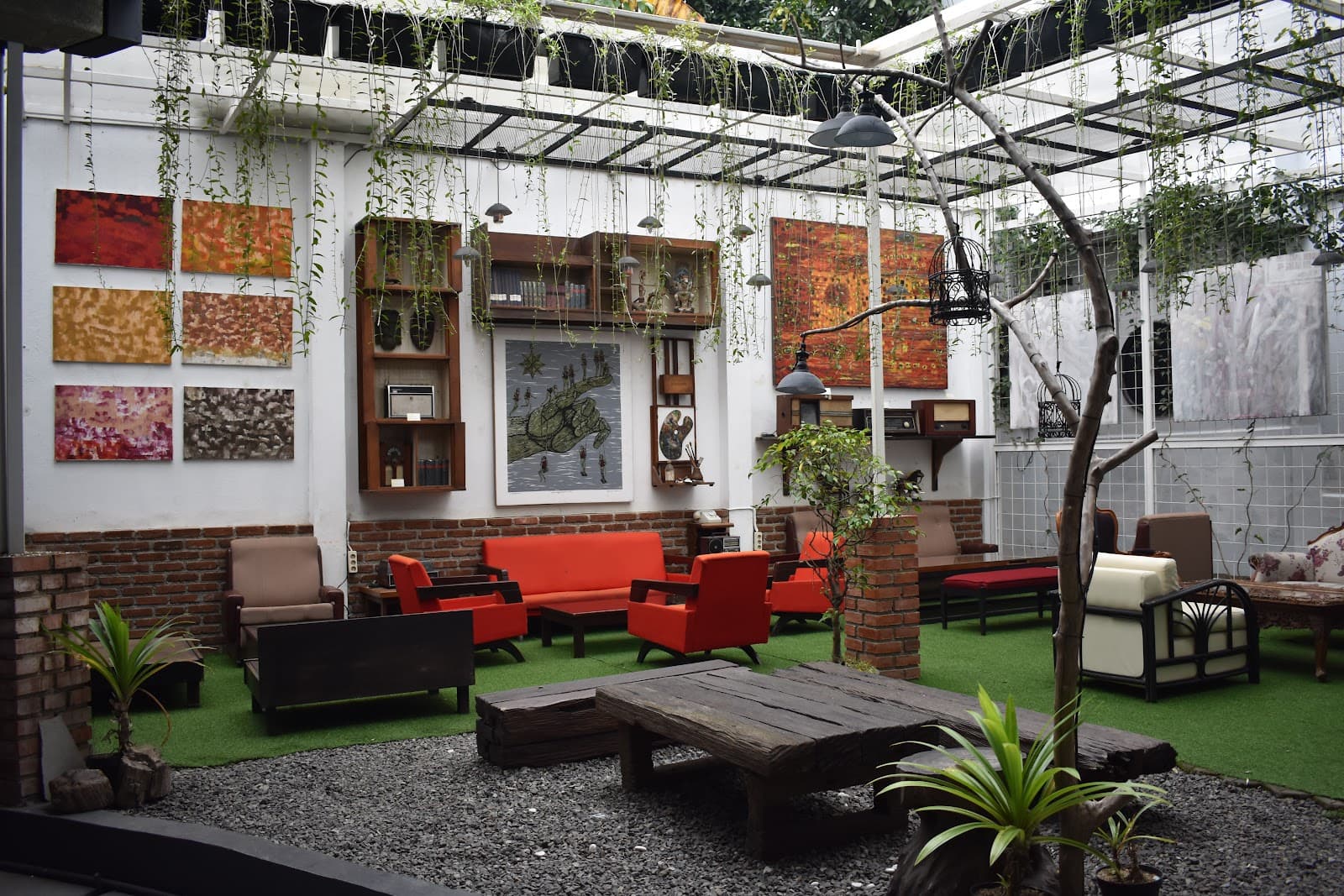
National Education Museum UPI
Explore Indonesia's educational journey from prehistoric times to modern day, featuring historical artifacts and colonial-era books.

Highlights
Must-see attractions

Social
From TikTok & Reddit
Best Time
Fewer crowds, better focus

National Education Museum UPI
Best Time
Fewer crowds, better focus

Highlights
Must-see attractions
Explore Indonesia's educational journey from prehistoric times to modern day, featuring historical artifacts and colonial-era books.
"Interesting artifacts, but a guide is essential for a meaningful visit due to upkeep issues."

Consider hiring a guide
Essential for understanding exhibits and crafting a narrative, as many displays lack context.
Check interactive displays
Many TVs and interactive elements are reported as not working, so manage expectations.

Highlights
Discover the most iconic attractions and experiences

Colonial-Era Books
Exhibition Hall
Discover rare, old books from Indonesia's colonial past, offering a glimpse into historical education.

Historical Dioramas
Exhibition Hall
Visual representations of educational milestones, though some may lack detailed explanations.

Development of Education in Indonesia
Main Exhibits
Trace the evolution of the Indonesian education system through various displays and artifacts.
Plans like a pro.
Thinks like you
Planning Your Visit
Manage Expectations for a Sub-Par Experience
Accessibility and Campus Location
Best Times
Insider Tips
from TikTok, Instagram & Reddit
Consider hiring a guide
Essential for understanding exhibits and crafting a narrative, as many displays lack context.
Check interactive displays
Many TVs and interactive elements are reported as not working, so manage expectations.
Prepare for reading-heavy exhibits
The museum relies heavily on text; bring a notebook if you want to jot down key info.
Campus amenities available
Plenty of parking, plus cafeterias and canteens for a break or meal.
Tips
from all over the internet
Consider hiring a guide
Essential for understanding exhibits and crafting a narrative, as many displays lack context.
Check interactive displays
Many TVs and interactive elements are reported as not working, so manage expectations.
Prepare for reading-heavy exhibits
The museum relies heavily on text; bring a notebook if you want to jot down key info.
Campus amenities available
Plenty of parking, plus cafeterias and canteens for a break or meal.
What Travellers Say
Reviews Summary
The National Education Museum UPI offers a glimpse into Indonesia's educational history with some interesting artifacts like colonial-era books. However, many visitors find the experience underwhelming due to non-functional interactive displays, poor lighting, and a lack of contextual explanations, making a guide highly recommended.
"An underwhelming museum experience. Museum needs more care, the interactive display/TVs do not work and some plaques have faded until the text is not legible.
Museum is poorly lit and the layout is not very well planned, some backtracking required. Some images are not printed on high quality print paper and photo quality tends to be poor.
Some dioramas lack an explanation as to the context, leaving the visitor to guess what is being depicted. Also, some information is not contextualized or only superficially touched on.
The museum has a number of interesting artifacts like old colonial-era books, however they can only be looked at. Very reading-heavy museum with not much that can be touched/interacted with. Without a guide who can help explain and also craft a meaningful narrative throughout your visit, the experience can be very sub-par.
In terms of accessibility, museum is on the campus of Universitas Pendidikan Indonesia. You can take a car or bike and the museum is easy to find. The museum has restrooms and ramps for wheelchair users.
Overall would not recommend a visit, especially for tourists who have limited time to explore Bandung."
Armond Bushfield
"It was a great museum, you can visit at Indonesia Universitybof Education area. There are plenty parking lot and cafetaria and canteen area for rest and chill with comfy horizone."
FARIQ HUDIYA
"It is a good place to improve our insights regarding development of educational system in Indonesia. Moreover, the museum provides several good facilities"
Vicky Mudeng
What People Like
What People Dislike
Frequently Asked Questions
🚇 🗺️ Getting There
The museum is located on the campus of Universitas Pendidikan Indonesia (UPI). You can reach it by car or bike, and there is ample parking available.
While specific public transport routes directly to the museum aren't detailed, it's situated on a university campus, suggesting local bus routes might serve the area. It's best to check local Bandung transport apps for the most current information.
Visitors report plenty of parking available at the UPI campus where the museum is located.
Yes, the museum is described as easy to find once you are on the UPI campus.
Yes, cycling is a viable option to reach the museum, and there are parking facilities for bikes.
🎫 🎫 Tickets & Entry
Specific opening hours are not widely published online. It's advisable to check with the museum directly or visit during standard daytime hours on weekdays.
Admission fees are not readily available online. It's recommended to inquire at the museum upon arrival for current ticket prices.
There's no indication that advance booking is required. Tickets are likely available for purchase at the museum.
As the museum is on a university campus, student discounts might be available. It's best to ask about this at the ticket counter.
Information on special exhibitions or events is not frequently updated online. Checking the UPI website or contacting the museum directly would be the best approach.
🎫 🧭 Onsite Experience
Reviews suggest the museum needs more care, with issues like poor lighting, non-functional interactive displays, and faded plaques. Some walls may also show scratches.
Unfortunately, many interactive displays and TVs are reported as not working. The museum is largely reading-heavy.
Yes, a guide is highly recommended. Without one, the experience can be sub-par due to the lack of context and explanation for some dioramas and artifacts.
The museum features interesting artifacts, including old colonial-era books and displays charting the development of the Indonesian education system.
Given the reading-heavy nature and non-functional interactive elements, it might not be the most engaging for young children unless accompanied by a knowledgeable guide.
🍽️ 🍽️ Food & Dining
Yes, the UPI campus has cafeterias and canteens where you can rest and eat.
While not explicitly stated, it's generally advisable to consume outside food and drinks in designated areas like the cafeterias, not within the exhibition halls.
Campus cafeterias and canteens typically offer a range of local Indonesian dishes at affordable prices.
📸 📸 Photography
Photography policies can vary. It's best to check for signage at the entrance or ask museum staff. Flash photography is often prohibited to protect artifacts.
While the exhibits themselves might not be highly photogenic due to their condition, the colonial-era books and historical dioramas offer some visual interest.
The museum is described as poorly lit in some areas, which might make photography challenging without a good camera or tripod.
For Different Travelers
Tailored advice for your travel style
👨👩👧 Families with Kids
To make the visit more enjoyable for families, consider hiring a guide who can bring the exhibits to life with stories and explanations tailored for children. Alternatively, focus on the visual aspects of the dioramas and the historical books, and perhaps supplement the visit with a fun activity on the UPI campus afterwards, like enjoying the cafeteria facilities.
🚶 Budget Travelers
To maximize value, focus on the core exhibits and perhaps skip a formal guide if budget is a major concern, though this will impact the depth of understanding. Utilize the ample parking if arriving by private vehicle.
Deep Dives
In-depth insights and expert knowledge
Navigating the Museum Experience
The lack of clear context for some dioramas and the heavily text-based nature of the exhibits mean that a visit can feel quite dry without a guide. Visitors who have had a positive experience often mention the presence of a 'professional museum educator' who helped craft a meaningful narrative. Therefore, if you plan to visit, consider arranging for a guide or be prepared to do significant reading to fully appreciate the collection. The museum does offer restrooms and ramps, making it accessible for wheelchair users.
Despite its shortcomings, the museum does house some genuinely interesting artifacts, such as old colonial-era books. These items offer a unique window into the past. However, the inability to interact with most exhibits means visitors are largely passive observers.
Campus Amenities and Accessibility
Beyond parking, the campus provides essential amenities like cafeterias and canteens. These spots offer a place to rest, recharge, and grab a meal or snack, which can be particularly useful after exploring the museum. The availability of these facilities enhances the overall visitor experience, allowing for a more relaxed day out.
In terms of accessibility, the museum is equipped with restrooms and ramps, catering to visitors with mobility needs. This ensures that individuals using wheelchairs can navigate the museum more comfortably. The campus setting also implies a generally well-maintained environment, though specific museum exhibits may require more attention.





Social
from TikTok, Instagram & Reddit